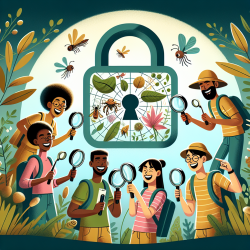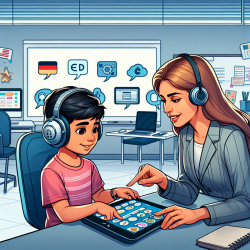Early detection and intervention for hearing loss in infants are critical steps that can significantly impact a child's language, social, and cognitive development. The research article "Infants and Hearing" by Deborah Hayes and Jerry L. Northern offers invaluable insights for practitioners working with infants, emphasizing the importance of integrating clinical audiology with medical practice. This blog post explores key takeaways from the research and suggests how practitioners can enhance their skills and services by applying these insights or pursuing further research.
Understanding the Importance of Early Identification
The first section of "Infants and Hearing" highlights the crucial role of early identification of hearing loss. The Joint Committee on Infant Hearing and the National Institute on Deafness and Other Communication Disorders have made significant efforts in promoting early detection. Practitioners are encouraged to stay informed about the latest recommendations and screening programs, understanding the historical context and evolution of these practices to better serve newborns and infants.
Implementing Infant Hearing Programs
Chapter 2 of the research provides a blueprint for establishing successful infant hearing programs. It covers practical aspects of implementing and evaluating the success of these programs. For practitioners looking to start or improve an infant hearing screening program, this section offers a step-by-step guide, emphasizing the importance of a clear approach and thorough evaluation to ensure the program's effectiveness.
Clinical Aspects of Hearing in Infants
The second section delves into the genetic, teratogenic, traumatic, and infectious processes that can affect an infant's hearing development. Understanding these factors is crucial for practitioners to provide comprehensive care. The book provides a solid foundation in clinical genetics, human development before birth, and the care of premature and critically ill newborns, offering insights into the multifaceted nature of hearing loss and its implications.
Evaluation and Management with a Family-Centered Approach
The final section of "Infants and Hearing" focuses on the evaluation and management of hearing loss in infants using a family-centered approach. It reiterates the importance of early intervention and individualized rehabilitation plans. Practitioners are encouraged to adopt a holistic approach, considering the family's role in the intervention process and tailoring strategies to meet the unique needs of each child and family.
Advancements in Hearing Screening Techniques
Advancements in hearing screening techniques, such as Otoacoustic Emissions testing and Auditory Brainstem Response measurement, have revolutionized the field. Practitioners should familiarize themselves with these techniques to enhance their diagnostic capabilities. Continuous education on the latest technologies and methodologies is essential for improving the accuracy and efficiency of early hearing detection.
Embracing Multidisciplinary Collaboration
"Infants and Hearing" underscores the importance of multidisciplinary collaboration in the care of infants with hearing loss. Audiologists, speech-language pathologists, neonatologists, and pediatricians must work together to provide comprehensive care. Practitioners should seek opportunities for cross-disciplinary learning and collaboration to enhance the quality of care for their young patients.
Adopting a Holistic View of Infant Care
The research emphasizes a holistic view of infant care, acknowledging the interplay between hearing loss and other medical disorders. This perspective encourages practitioners to consider the broader health and developmental context of their patients, ensuring a more comprehensive approach to diagnosis and treatment.
Engaging in Continuous Learning and Research
"Infants and Hearing" serves as a reminder of the ever-evolving nature of audiology and the ongoing need for practitioners to engage in continuous learning and research. Staying abreast of the latest developments, participating in professional development opportunities, and contributing to research are vital for advancing the field and improving outcomes for infants with hearing loss.
Conclusion
The insights provided in "Infants and Hearing" are invaluable for practitioners aiming to enhance their skills and services in early hearing detection and intervention. By implementing the outcomes of the research presented and pursuing further research, practitioners can make significant strides in improving the care of infants with hearing loss. Embracing a family-centered approach, staying informed about advancements in screening techniques, and fostering multidisciplinary collaboration are key to providing comprehensive and effective care.
To read the original research paper, please follow this link: Infants and Hearing.










